The next time we meet it will be autumn. Who submitted the requistion for that? Thanks. A lot. At least we get one more Saturday in. We’ve had a good run of weather to see us out, picking a couple of pounds of tomatoes a day. I’ll need a new hobby once the garden slows down. Maybe I could join a men’s pie making groups or something. The American Association of Wine Economists is one of my favourite BlueSky feeds to follow. They seem interesting. That up there? Germany 1920s. Men with a hobby. Comparatively speaking, a better sort of marching in those times.
Speaking of weird, Stan’s monthly newsletter Hop Queries is out for another month and, under the surprising heading “Bitterness and Attitude”, he wrote:
When we moved from the low-altitude flatlands of Illinois 700 feet) to New Mexico (5,320 feet), a professional brewer told me to just throw in a few more pellets when I brewed an IPA. I hope the information in the archives is more useful.
Oh! Altitude. He wrote altitude. That makes waaaaay more sense. Note: rumours of Stan O’Eire. Another bit of a puzzle was encountered in this story of the passing of a venerable Mancunian:
…for ten years straddling both decades there was one constant on the streets of Moss Side and Old Trafford – George Powell, the self-syled Ginger Beer Man. He became a legend too selling his home made brew from his bike. George has died, aged 97, and later this month 500 people from all over the country and abroad are expected to pay their respects and attend his funeral. And his son Glen is going to ensure he will get the send-off the big family man deserves after his perfectly timed win at bookies Betfred. Self-employed handyman Glen won £20,000 from a £4 wager… much of his winnings will be spent on George’s funeral at the Church of God of Prophesy in Moss Side, burial at Southern Cemetery followed by the wake at Bowden Rugby Club.
Would that have been an alcoholic ginger beer? I used to brew one based on the CloneBrew recipe. This January 1978 edition local CAMRA newsletter “Whats Doing?” from Manchester suggests (at page 9) that the Salford brewers Walker & Holmfreys brewed a ginger beer along side ale brewing.
Staying there about, you know some things are worth repeating. This same passage in Katie’s edition of The Gulp at the end of last week was quoted in the Boak and Bailey Saturday update but I have to note this fabulous bit of stream of consciousness too:
…I have to check myself before I wreck myself. Tonight is going to be a late one. But it’s just so delicious, so perfect in this moment. Savour it, I tell myself, knowing that I can’t. I’m not a savourer. I eat in big bites, drink in big gulps. I want the best things all in one go, now.
There go I, too. Back here at home, Ontario’s new booze sales in corner stores have attracted all sorts of attention… including the independent accountants:
When the Ford government expanded sales of beer, wine, cider, and ready-to-drink cocktails into Ontario convenience stores and gas stations on Sept. 5, it did so ahead of schedule. A master framework agreement (MFA) signed under the Liberal government in 2015 gave the privately run Beer Store exclusive rights to sell 12—and 24-packs of beer. It was set to expire in 2026, but the government’s expedited plan involves an “early implementation agreement” with the beer retailer that will see the province pay the company up to $225 million. The FAO report will estimate the financial costs and benefits of accelerated expansion “and compare these fiscal impacts to a scenario where the Province expanded alcohol access at the expiration of the MFA on Dec. 31, 2025.”
Listening to CBC Radio 1’s Ontario Morning the other day, they played an audio reworking of this story including interviews with convenience store clerks and customers about the new rules and heard some interest points of view. Shop owners have not been informed about expired product returns so many only place small orders. And a portion of product has to come from small producers – 20 per cent for beer, ciders, and ready-to-drink cocktails, and 10 per cent for wines. Which is not a bad guaranteed return. But there are supply chain issues getting all the stores stocked up. Me, I have not taken advantage of the new world order yet.
Conversely, over on FB, Max has been out and about posted a brief report on his trip to Vorkloster, a brewery in Predklasteri, Czechia… using many words I do not know:
Vorkloster’s pivnice is cute and friendly, it does feel like part of a monastery, and many of the punters are locals dropping by for a pifko. The kulajda was just luvly. The Výčepní tasted jaded, like the feeling of an afternoon after a couple of very rough days at work. Jantarový Ležák is like an otherwise very good sauce that’s just not thick enough. Tmavý ležák has the right balance of coffee and milk chocolate.
Breaking news out of Albany, NY:
Free pizza is almost dead at the City Beer Hall! Long live pizza at CBH! A promotion in place since the City Beer Hall opened in spring 2011 at Howard and Lodge streets downtown provided a small individual cheese pizza for free with every pint of beer sold. The practice is being sharply curtailed, now available only after 10 p.m. on Friday and Saturday.
I will have to check in with Craig to find out of I was ever there. Over at Pellicle, Katie (for the double) wrote about a beer that I used to cross provincial borders* to buy, Theakstons’ Old Peculier:
If it wasn’t for the Steel’s Masher, Old Peculier would not be the beer it is today. The way that the malt is hydrated and mashed by the machine is incredibly efficient, releasing enzymes and raking through the grist before it can form dry-centred clumps. This machine makes short work of stiff mashes. It was invented in Scotland by James Steel, a brewer who, like many of his peers in industry, was making a lot of Scotch Strong and Wee Heavy beers—high malt content, low water content mashes. Getting the paddles around a mash like that is like stirring six tons of day-old porridge, in intense steam heat, in cramped conditions.
Speaking of the good stuff, Matty C wrote about cask ale for What’s Brewing (apparently a play on words of the 1978 Mancester journal of note mentitoned above, What’s Doing) and makes a very good point about the enjoyment of things in the abstract:
I tend to find that foreign visitors who appreciate their beer genuinely revere the cultural significance of cask dispense. But they also find only disappointment when, after months of anticipation, they arrive at last only to be served a tired pint of London Pride that is, well, warm and flat. We’re responsible for that reputation because in so many places where cask beer is served it’s not treated with the care it deserves. I don’t believe in the notion that cask should be some sort of protected appellation though. For me, the problem exists because advocates too often tend to raise cask beer on a pedestal, when really it should be treated like the most normal thing in the world. Yes, it’s a wonderful way to drink beer, but it’s not that special, really, it’s just beer, after all. Care and reverence are not the same thing.
On the topic of keeping the beer cool, one award winning pub has a related issue on its hands with the authorities due to a noisy fan:
Mr Bull took over the listed corner boozer in Gosport, Hants, in 2022. The previous landlady had the cooling unit located in a door cavity close to the beer cellar but after receiving safety advice, he moved it into the courtyard. Following a complaint, he was visited by a planning department enforcement officer last summer and later informed he would need planning permission for the unit. As part of the application, Mr Bull spent £1,500 on a sound survey as part of this in order to prove that the unit was not noisy. However, the survey found that the unit was loud enough that “it would cause sleep disturbance” to someone sleeping on the ground floor of the house next door, and ‘may’ do so for someone sleeping in the upstairs room.
 Speaking of a proper pub, I have seen such things in histories of Victorian saloon hellholes… but never in real life:
Speaking of a proper pub, I have seen such things in histories of Victorian saloon hellholes… but never in real life:
…see that trough in the pub? That was so blokes didn’t have to leave the bar to relieve themselves. People in London are posh now though; they go to the gents for a piss.
Want a job in beer? Perhaps an open position with the Anderson County Beer Board is for you!
The three members would serve a three-year term expiring in September 2027. The Beer Board was established for the purpose of licensing, regulating and controlling the transportation, storage, sale, distribution, possession, receipt and/or manufacture of beer, according to a county government information. Interested residents can send a resume or pick up a request-to-serve form at the County Commission Office, 100 N. Main Street, Room 118, Clinton, TN, posted outside the office door.
Will Hawkes is doing an excellent job in London Beer City with his extended series on the history of the biggest pub in London from the 1930s to the 1990s, reminding us that the past is a foreign country and that includes the fairly recent past including the era of the rave:
…Fascination at the Downham Tavern took place on Sunday afternoons, taking in not only DJs but also live bands like Natural Life. These all-dayers quickly became a huge thing, according to Wilson, who always played the last three hours, and who played at Bonnie’s on Saturday nights. “We had the best laser show, we had the first gyroscope in [a dance] venue,” says Wilson. “When we first started [in 1988] we had 300, 400 people but it just took off. It got to stage where we had ticket touts … the build-up was massive, ‘I can’t wait, I can’t wait!’” Unusually for a pub, all this excitement was not fuelled by beer. Ecstasy arrived in the UK in a big way in the late 1980s, and it’s fairly safe to assume it was a key part of the Fascination experience. “Oh yeah,” says Wilson with a chuckle. “That was flying about.” The Downham Tavern all-dayers ended in 1990. By that stage, media hysteria about rave culture had reached fever pitch, and policing had become much stricter…
There was a good piece in the Manitowoc Herald Times on a 71 year old ship that has helped make that fine community the “Specialty Malt Capital of the World”, the self-unloading freighter SAGINAW:
The name was changed to SAGINAW on Nov. 20, 1999, in honor of Michigan’s Saginaw River. By 2008, the vessel was repowered from steam propulsion to diesel. Today, the 14,000-ton SAGINAW routinely transits between the ports of western Lake Superior and the Port of Manitowoc at least twice a year. Briess confirmed we can expect to see one more shipments of grain this year aboard SAGINAW. With up to 25 million pounds of raw barley in each delivery, that equates to about 40 million 12-ounce bottles of beer.
Finally, word of two more passings. Many remembrances followed up the announcement of the passing of drinks writer and cider maker, Susanna Forbes:
Forbes, whose long fight with cancer had been known by those close to her, had not faltered over the past few years in her dedication to the industry she loved. Speaking to db last year, she outlined how much she “appreciated people and cherished the perspective that treatment and its challenges had uncovered”. Her generosity of spirit showcased by her constant reminder that “in times of hardship you recognise the people who go out of their way to really make a difference”. Friends and colleagues have come from far and wide to pay their tributes to Forbes for her personality and kindness being at the forefront of their descriptions.
And there was another passing this week of particular note for me, of a craft beer pioneer in my old hometown of Halifax NS, Kevin Keefe of the Granite Brewery:
When Keefe opened the Granite Brewery, it was the second microbrewery in Canada — and first east of the Rockies. That’s a far cry from today as there are dozens in Nova Scotia alone. Keefe first became interested in craft brewing after reading an article about it. In 1984, he went to the U.K. and learned how to do it at a brewery. Not only was Keefe a brewer, he was a savvy businessman. “If I retailed it to the liquor commission, I’d get 50 cents a bottle, but if I sold it in a glass to you, I’d get almost two bucks a bottle, so it didn’t take very much for me to figure out, well, what I want to do is sell it to you,” Keefe told the reporter in a 2017 interview for Halifax Magazine. And thus the Granite Brewery operated out of Ginger’s Tavern.
The Granite of Halifax was a big part of my good beer education. I was a bar rat there in my early twenties as soon as he opened the place. I can smell the Ringwood yeast in my mind’s schnozz this very minute.
There. Until next week, check out Boak and Bailey every Saturday and let’s all see if Stan cheats on his declared early autumnal break from his updates on Mondays. Then listen to Lew’s podcast and get your emailed issue of Episodes of my Pub Life by David Jesudason on the odd Fridays. And Phil Mellows is at the BritishBeerBreaks. Once a month, Will Hawkes issues his London Beer City newsletter and do sign up for Katie’s wonderful newsletter, The Gulp, too. Ben’s Beer and Badword is thereback with the sweary Mary! And check out the Atlantic Canada Beer Blog‘s weekly roundup. There is new reading at The Glass which is going back to being a blog. Any more? Check out the Beer Ladies Podcast. That’s quite good. And the BOAS podcast for the bro-ly. And the long standing Beervana podcast …except they have now stood down. Plus We Are Beer People. The Boys Are From Märzen podcast appears suspended as does BeerEdge, too. But not Ontario’s own A Quick Beer. There is more from DaftAboutCraft‘s podcast, too. All About Beer has podcasts and there’s also The Perfect Pour. Plus follow the venerable Full Pint podcast. And the Craft Beer Channel on Youtube. The Moon Under Water is gone which is not surprising as the ask was $10 a month. Pete Brown’s costs a fifth of that but is writing for 47 readers over there.
*When we lived in PEI in eastern Canada, I would stop in Sackville NB when returning from Halifax NS just to grab a few Peculiers.
**Me, I’m all about the social medias. Facebook still in first (given especially as it is focused on my 300 closest friends and family) then we have BlueSky (183) rising up to maybe… probably… likely pass Mastodon (932) in value… then the seemingly doomed trashy Twex (4,457) hovering somewhere well above my largely ignored Instagram (152), crap Threads (52) with Substack Notes (1) really dragging up the rear.




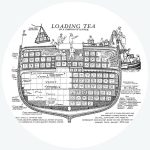


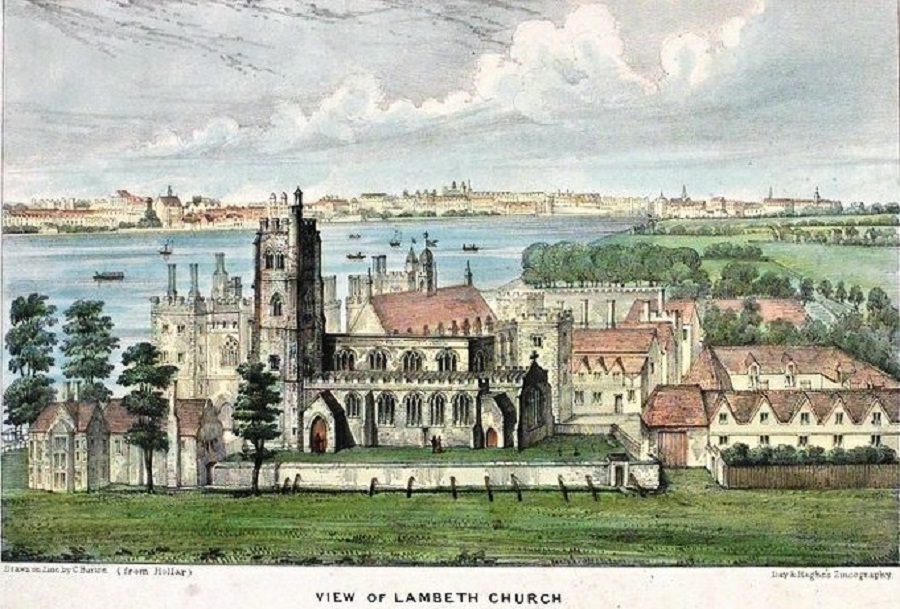

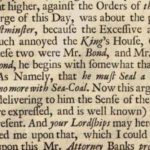


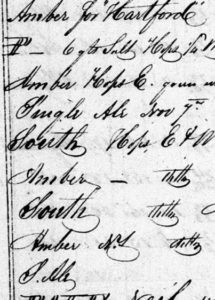
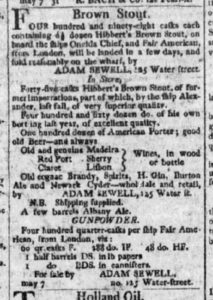 Next, Hibberts Brown Stout. This stuff is all over the place. Click on that thumbnail. That is a notice from just one store in 1805 stating that they have fifty-five casks on hand with another 498 casks on route. British beer brought in and in bulk. Broadly.
Next, Hibberts Brown Stout. This stuff is all over the place. Click on that thumbnail. That is a notice from just one store in 1805 stating that they have fifty-five casks on hand with another 498 casks on route. British beer brought in and in bulk. Broadly.  Plus, there’s southern beer. You see it in the logs. Click on the ad. Brewing was not practical below a certain latitude so brewers like William Faulkner of NYC and Albany shipped to South Carolina… and the West Indies. He died in 1792. Not to mention there was
Plus, there’s southern beer. You see it in the logs. Click on the ad. Brewing was not practical below a certain latitude so brewers like William Faulkner of NYC and Albany shipped to South Carolina… and the West Indies. He died in 1792. Not to mention there was  And it goes on and on –
And it goes on and on –  Attentive readers will recall that I have a slow side project in figuring out what I can about Taunton ale. It was a bit of a by-catch to the whole Albany ale thing with references to it showing up in central New York around the time of
Attentive readers will recall that I have a slow side project in figuring out what I can about Taunton ale. It was a bit of a by-catch to the whole Albany ale thing with references to it showing up in central New York around the time of